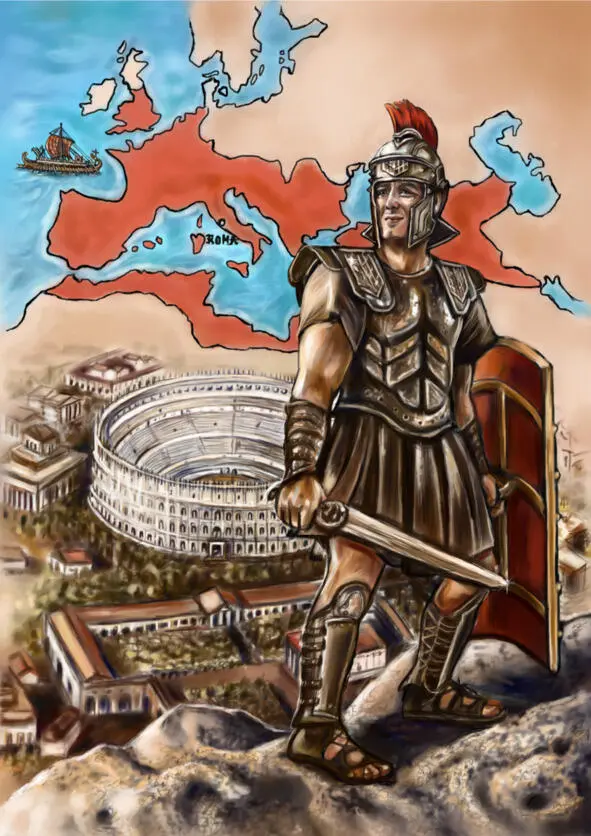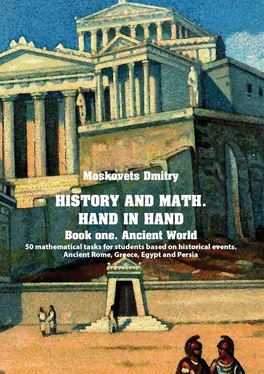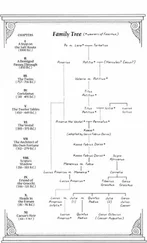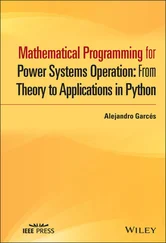In history, it is crucial to what came first: Ancient Rome or the Republic of Venice, Caesar or Dmitry Donskoy? After that, there should no confusion about who was born first: Archimedes, Pythagoras or Pericles. All three of them were Greeks and prominent personalities. Pythagoras was born first in 570 BC. He lived 5 years longer than Archimedes. Archimedes lived 10 years longer than Pericles. If we add up all the years they lived, we get 220 years. Pericles was born 4 years after the death of Pythagoras. How many years passed between Pericles’ death and Archimedes’ birth, if 358 years passed between the birth of Pythagoras and the death of Archimedes?
G.8. The Peloponnesian War or Sparta versus Athens
As usual, the Peloponnesian War started because Athens wanted the Spartans to be just like them, and the Spartans wanted the opposite. The war lasted from 431 to 404. BC. Historians distinguish two periods of the war: the Archidamian War and the Deceleian War. Between them, there was the «Peace of Nicias» that lasted for six years. How long did the Archidamian War last, if it was a year longer than the Deceleian War did?
G.9. The Parthenon as tremendous historical legacy
Dedicated to Athena, the Parthenon’s construction on the Acropolis 19 19 An acropolis was the settlement of an upper part of an ancient Greek city, especially a citadel, and frequently a hill with precipitous sides, mainly chosen for purposes of defense.
lasted from 447 to 438 BC. Even though it was burned down and partially destroyed, it draws attention with its columns’ straight lines. To achieve this, ancient architects curved the straight lines and even tilted some of the columns around the temple’s perimeter. There are 9 more columns on the east side than on the south. In total, there are 16 columns on the south and north sides. How many columns are there along the temple’s perimeter?
G.10. The Battle of Marathon or how the Marathon races were born
On September 12, 490 BC, not far from Athens (42 km), a battle between the Persians and the Greeks took place. This was the first significant victory of the Greeks over the Achaemenid Empire. The Persian forces were 160% larger than the Greek army. The Athenians made up 90% of the Greek army. The Greeks won, and a messenger ran from Marathon to Athens. Upon his arrival in Athens, he fell dead in the square with the words, «Rejoice, Athenians, we have won!» 20 20 Historians debate the truthfulness of this event, as it was mentioned in the documents only five centuries later.
After his epic run, the distance he ran (42 km) became known as the «Marathon».
How many Athenians were in the Greek army, if, in total, 36 thousand soldiers took part in the battle?
G.11. A little about Theseus 21 21 Theseus was the mythical king and founder-hero of Athens. He is sometimes described as the son of Aegeus, King of Athens, and sometimes as the son of the god Poseidon.
, Aegeus and the Minotaur 22 22 In Greek mythology, the Minotaur is a mythical creature portrayed during classical antiquity with the head and tail of a bull and the body of a man. He dwelt at the center of the Labyrinth and was eventually killed by the Athenian hero Theseus.
Having defeated the Minotaur, Theseus, as depicted in the famous myth and cartoon, went home to Athens. Today, in Crete, a ferry from Heraklion, near the Palace of Knossos, runs to Athens in the evening at 21:00. It arrives at 6:00. Could Aegeus have seen the black sail of Theseus’ ship if Theseus sailed at the same time as the modern ferry? Theseus’ ship moved 6 times slower. The distance to Athens is 306 km.

We could talk for hours about ancient Rome, and even today, many scholars still study the great history of the Roman Empire. We won’t go deeply into the details here. Instead, we’ll look at some tasks and think about the Empire’s main historical events.
THE FIRST PUNIC WAR
The «First Punic War» is the war between Carthage and the Roman Republic. It started in 264 BC and lasted for 23 years ending with the victory of the Romans.
R.1. Legions are longing for the sea
At the start of the First Punic War, Carthage reigned supreme as the dominant maritime power, and Roman light ships couldn’t inflict any significant damage to the Carthaginian quinqueremes 23 23 A quinquereme is a boat with 5 rows of oars, up to 25 rowers in each row and 1 oar per rower. (Displacement – 200 tons, length – 70 m, width – 8 m). It could took up to 100 warriors.
. However, by an accident of fate, one quinquereme was thrown on land. The delighted Romans took the ship and carefully disassembled the vessel. They copied the design and constructed a mighty Roman fleet of 100 quinqueremes and 20 triremes 24 24 A trireme is a boat with 3 rows of oars, up to 150 rowers, 12 sailors, and 80 warriors.
.
How many: legions 25 25 The Roman legion was the standard military unit of the Roman army. Its number changed over time. Let’s assume there were 4200 infantry without cavalry. It was composed of 30 maniples and they were composed of 2 centurias (60—120 men).
, maniples, centurias the new fleet could carry?
R.2. Rowing is an honorable occupation
In the era of the Roman Republic, rowers were highly respected. After the Roman fleet was built, rowers hired and trained tirelessly. How many rowers enrolled in the fleet? The size of the fleet is mentioned in the previous task.
R.3. Toward each other
The distance between Carthage and Sicily 26 26 Sicily is the largest island in the Mediterranean Sea.
was 213 km. The First Punic War was still going on, and a fast quinquereme sailed from Lilibey to Carthage with an urgent message. Meanwhile, a small fleet of various ships with reinforcements and provisions set sail for Sicily. How long will it take for the fast ship to meet the fleet if the fleet’s speed is 4 knots and the quinqireme’s is 6 knots? Sailors measure everything in miles. One mile is 1853 m, and a knot – measure of speed, – equals 1 mile per hour.
R.4. How many ships did disappear and where did they go?
In ancient times they went, as a rule, to the seabed. There were several reasons why they sank. Firstly, they could have been damaged in battle, or, simply because of their poor state due to the crew’s negligence, could start leaking. However, the primary reason for ships’ disappearance was Neptune’s 27 27 Neptune is the god of freshwater and the sea in Roman religion.
wrath or forces of nature, to put it in contemporary terms.
1,200 ships of the First Punic War didn’t escape this fate. Carthage lost five out of every twelve ships, while the Romans lost seven of every twelve. In total, who lost more ships and by how many?
The task can be dealt with in two ways, and, of course, we might try to assess whether there were many ships in the ancient fleet compared to modern times.
THE SECOND PUNIC WAR
The Second Punic War lasted since 218 to 201 BC in Italy, Spain and modern Tunisia. Many historians described the war, and many battles were included into military texts and may fascinate even today. For example, the eminent Roman historian Titus Livius 28 28 Titus Livius was a Roman historian. He wrote a monumental history of Rome and the Roman people, titled Ab Urbe Condita, From the Founding of the City.
wrote a book about it called The War with Hannibal . 2,000 years ago.
Читать дальше













